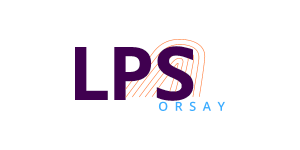Séminaire Daniela Kraft (Leiden University)
Active particles with anisotropic shape and flexibility
Biological microorganisms rely on their shape to create and direct their motion. In contrast, experimental realizations of synthetic self-propelled systems are currently mostly spherical and rigid. These experimental limitations preclude a fundamental understanding of how anisotropic shape and conformational flexibility affect a microswimmer’s individual and collective behavior.
In this talk, I will demonstrate that 3D microprinting can be exploited to create anisotropic synthetic microswimmers of virtually any shape, from spheres with spikes to microscopic boats.[1] Using this technique to print a class of anisotropic particles ranging from spheres to bent and straight rods, I will demonstrate that cluster formation can be dramatically enhanced by an anisotropic swimmer shape. We find that the clustering dynamics is governed by a single scaling parameter that depends on particle density and shape only, due to an interplay between interlocking probability and cluster stability. [2] Finally, I will show the complex and intriguing behavior that is obtained when combining activity with flexibility. Our work provides key insights into how shape can be used to rationally design out-of-equilibrium self-organization, which is key to creating active functional materials.
[1] R.P. Doherty, T. Varkevisser, M. Teunisse, J. Hoecht, S. Ketzetzi, S. Ouhajji, D. Kraft, Catalytically propelled 3D printed microswimmers, Soft Matter, DOI: 10.1039/d0sm01320j (2020); Highlighted in Nature News in Brief, 587, p. 527 (2020) and chosen as one of the “Images of the Year 2020” in Nature (Dec 2020); covered by media and news globally
[2] S. Riedel, L. Hoffmann, L. Giomi, D. Kraft, Designing highly efficient interlocking interactions in anisotropic active particles, Nature Communications, (2024)
